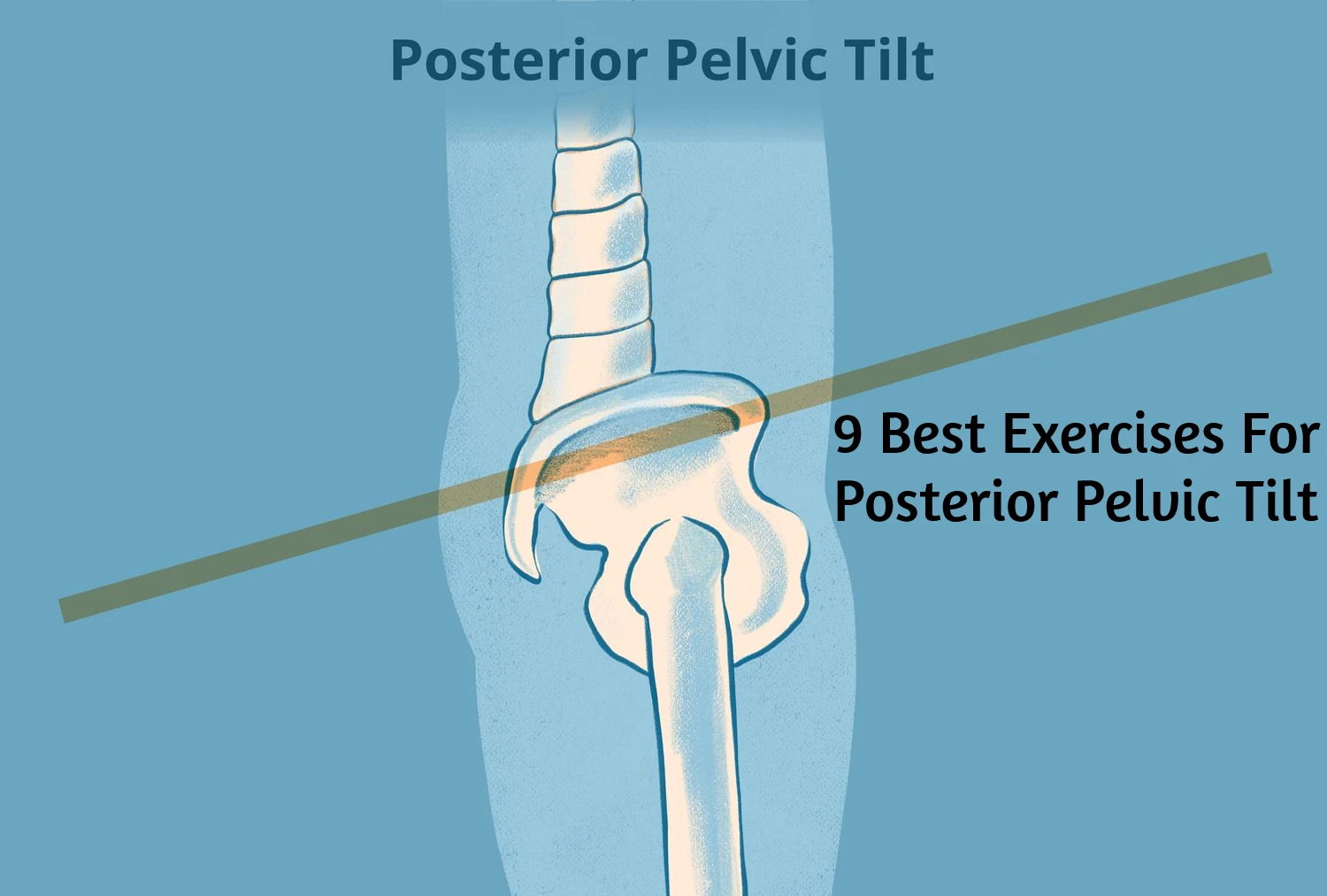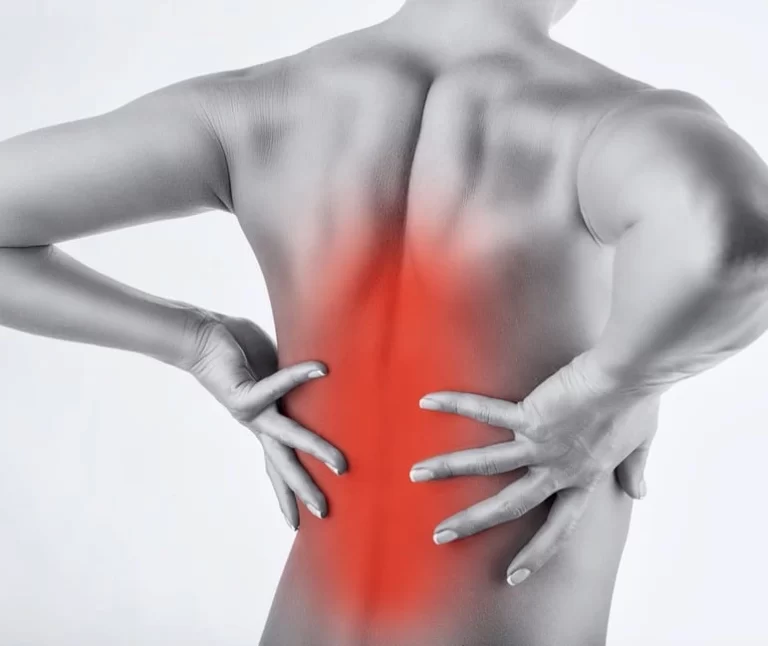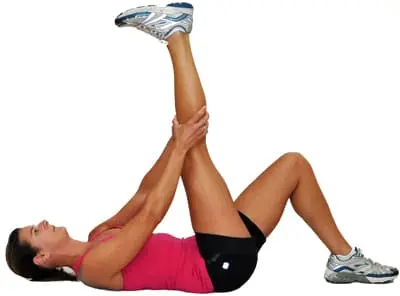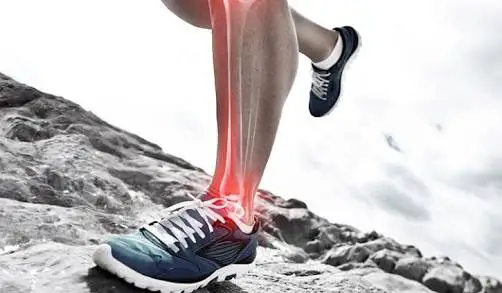9 Best Exercises For Posterior Pelvic Tilt
Exercises for posterior pelvic tilt focus on strengthening and stretching specific muscle groups to address the imbalances associated with this condition.
Targeting key areas such as the hip flexors, hamstrings, and core muscles can help correct pelvic misalignment and alleviate associated discomfort.
What is Posterior Pelvic Tilt?
Posterior pelvic tilt is a condition characterized by the backward rotation of the pelvis, leading to an increased curvature in the lower spine. This misalignment can contribute to various musculoskeletal issues, including lower back pain and poor posture.
Engaging in specific exercises can help address and correct posterior pelvic tilt by strengthening and stretching key muscles.
The anterior pelvic tilt is characterized by an unusually forward-bowed lower back. People who have anterior pelvic tilt frequently have bulging abdomens and buttocks.
This is the outcome of the lumbar spine being forced into hyper-lordosis by the pelvis tilting forward. The causes and effects of posterior pelvic tilt are opposite in presentation. People with posterior pelvic tilt may have the appearance of having their buttocks tucked in. This is the outcome of the lumbar spine being pulled flat by the pelvis tilting backward. A sedentary lifestyle and inactivity are the two main causes of abnormal posterior tilt.
Posture defects and posterior pelvic tilt are frequently the result of stiffness. Most of the time, you can improve your posture by strengthening and stretching your leg and core muscles.
Posterior Pelvic Tilt and Posture
Lack of movement can lead to body imbalances, especially for those who spend most of their days sitting down. This inactivity is a factor in:
Shortened tendons surrounding the pelvic bones, weak and tight leg muscles
- Imbalanced incorrectly
- Bad alignment
- A posterior pelvic tilt can be brought on by any of these variables.
- This is the moment when your upper body rounds back and your glutes tuck inward.
Similar to an anterior pelvic tilt, which causes the lower back to arch inward, a posterior pelvic tilt strains the lower back severely. Sciatica a pain that radiates down the back of one of your thighs or glutes is one type of back pain that may eventually result from this.
Exercise can be used to fix a posterior pelvic tilt. Discover nine exercises that will help strengthen your core and legs to aid with posture.
Why It’s Important to Correct Posterior Pelvic Tilt
- An incline in the pelvis modifies the body’s alignment. Most remarkably, it alters the lower back position.
- The bottom part of the spine’s normal bend is decreased by a posterior pelvic tilt. This may eventually result in lower back pain. Studies also link women with osteoporosis who have a pelvic tilt to a higher risk of fracture.
- Can digestive problems result from a posterior pelvic tilt? Through its effect on the muscles of the pelvic floor, it might. indicates that the symptoms of pelvic floor dysfunction include frequent urges to urinate, incontinence of urine or feces, and constipation.
- A 2019 Medicine article states that improving pelvic floor muscle function involves bringing the pelvis back into a symmetrical posture.
- Additionally, studies have shown that the more posterior tilt there is, the more it affects sitting-related respiratory performance.
- The thoracic spine’s tilt angle is altered as the pelvis tilts back. This affects respiratory function by limiting mobility in that location during breathing.
- A posterior pelvic angle has also been linked to an increased incidence of rectal prolapse, according to a 2020 study. A portion of the rectum spreads into the anus in this situation.
Pelvic Tilt In The Posterior, Anterior, and Lateral Aspects
- There are several kinds of pelvic tilts than posterior pelvic tilts. Anterior pelvic tilt and lateral pelvic tilt are the other two. The name of each is derived from the pelvic position.
- When the pelvis tilts forward, it is called an anterior pelvic tilt. The rear of the pelvis is higher than the front in this posture. This can cause pain since it increases the lower back’s curvature.
- Additionally, an anterior tilt may change the lower body’s range of motion, which may raise the risk of injury.
- One study, for example, discovered that football players who have an anterior pelvic tilt are more likely to get a hamstring injury. The fact that it kept its knee extended explains why.
- One side of the pelvis sits higher than the other when there is lateral pelvic tilt.
- Hip and lower back discomfort are linked to this position. Walking and running balance may also be affected.
Symptoms of a Posterior Pelvic Tilt
How can you tell if someone you’re training has a posterior pelvic tilt?
Symptoms are:
- Standing up makes the lower back comparatively flat.
- The lower back presses on the back of the chair as one is seated.
- The hips are tucked under while one is squatting. (This is called a wink of the butt.)
Yet another indication of a posterior pelvic tilt is a hunched-over posture with rounded shoulders. The lower back, hips, or knees can also cause pain or weakness.
9 Best Exercises For Posterior Pelvic Tilt
Following are the 9 best exercises for pelvic tilt
Glute Bridge
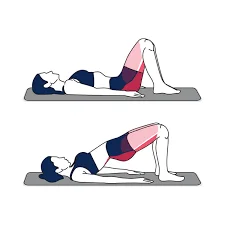
Steps To Follow:
- With your arms beside your torso and your knees bent, assume a prone position.
- Rest the hips, hold them for a short while, and then let go.
- Perform eight to twelve repetitions.
Plank

Steps To Follow:
- With your forearms on the ground, assume a stomach pose.
- Lift your body up into a straight line by using your core muscles.
- After 20 seconds of holding, release.
- Do this two or three times.
Straighten and slouch.
Steps To Follow:
- Take a seat and lean forward.
- After a little period of holding, sit as straight as you can.
- Hold, then take a more appropriate stance again.
- Do these steps eight to twelve times.
Toe Touch

Steps To Follow:
- Place your feet shoulder-width apart,
- Bend forward at the hips,
- And extend your reach to your toes.
- Release after 20 seconds of holding.
Leg lunges
Lunges strengthen your hamstrings, quadriceps, and glutes. A posterior pelvic tilt can be corrected by strong leg muscles, which prevent any one muscle from taking center stage.
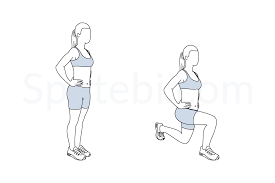
Steps To Follow:
- Step your right leg out in front of you while keeping your feet together.
- Raise your right leg to a ninety-degree angle. With your right leg still at a 90-degree angle, your other knee should come into contact with the floor.
- You can verify your position by looking in a mirror.
- To return to your starting position, step off with your right foot.
- With your left leg, take a step forward and bend to touch your right knee to the floor at a 90-degree angle.
- Do three sets of ten to fifteen lunges.
Notes: Avoid bending your knees past your toes as this can cause knee pain. You might want to avoid lunges and focus on other leg workouts if you have damaged knees.
Static hamstring stretch
Your legs’ three back muscles are called hamstrings. Long periods of standing and sitting can make them tense, which might result in poor posture.
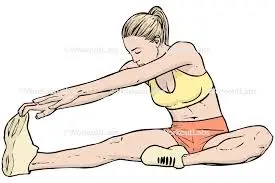
Steps To Follow:
- Take a seat in a firm chair without a cushion and extend your front leg.
- Maintaining a straight back, bend forward from the hips until you feel a stretch at the back of your leg.
- For 10 to 30 seconds, hold.
- Repeat on the other side while switching to the other leg.
Superman Exercise
The reason this exercise is named the “Superman” is because it resembles a superhero in midair. It can aid in strengthening the muscles that relate to your pelvis, the gluteus maximus, and lower back.
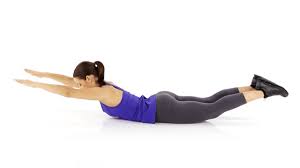
Steps To Follow:
- Extend your arms in front of you while lying on your stomach on the floor.
- Try to keep your chest up off the ground for ten to thirty seconds. Next, decrease.
- After every set, take a 10-second pause and repeat this three times.
Notes: If you have a bad back, it’s best to skip this exercise. For added comfort, you might want to place a mat or towel on the floor before beginning this exercise.
Cobra Stretch
The upright posture of the poisonous cobra snake gives name to this stretch. As the front body lengthens, the Cobra posture is great for a posterior pelvic tilt because it works the muscles in the back, glutes, and hamstrings.
Better posture and lower back pain are supported by more flexible spines, especially for those who have menstruation pain, which inherently makes you want to lean.

Steps To Follow:
- Place your belly down on the mat to begin. Point your toes, align your legs with your hips, and take a deep breath before moving on to the next exercise.
- Push yourself off the ground by bending your elbows gently until you feel your back extend.
- For 15 to 30 seconds, use your hands and wrists to support your weight. Take care not to lock your elbows during this time.
- Breathe deeply and slowly into and out of the pose.
Notes: Hold this modified Cobra pose with your elbows bent and your tummy on the floor to relieve some of the strain on your neck and back. Set your eyes forward and incline your chin downward to a comfortable level.
Foam Rolling For Calves
Foam rolling, also known as self-myofascial release, is similar to massage therapy. It’s a fantastic way to help release tension in different areas of your body after working out. Foam rollers are available online and in sporting goods stores.
The fascia, or connective tissue, beneath the skin that is required for healthy movement, is loosened by foam rolling. Although you can foam roll any area of your body, posterior pelvic tilt may be alleviated by concentrating on your legs.
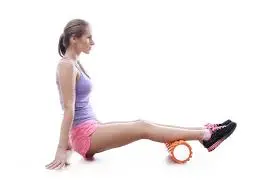
Steps To Follow:
- Place the foam roller beneath your calf region while lying on your side.
- Roll the foam roller up your calf slowly, paying attention to any “hot spot.” You experience increased tightness or tension in this area.
- Give this area a 30-second rollover.
- Change legs and repeat the motion. Apply the same technique to your thighs as well.
- Lying on your back, roll the foam roller up the back of your leg for increased pelvic focus and benefits.
- Roll the foam towards your glutes and up your hamstrings. Choose a hot location to sit on and concentrate your rolling there. Change legs and repeat.
Notes: Foam rolling can feel soothing and act as a kind of massage, even if you occasionally feel pain. You can also massage your spine and use foam rolling across your middle back.
Conclusion
In conclusion, addressing posterior pelvic tilt involves a combination of strengthening and stretching exercises to target key muscle groups. Exercises such as pelvic tilts, bridges, cat-cow stretches, and specific stretches for hamstrings and hip flexors can help improve posture and alleviate lower back pain associated with posterior pelvic tilt.
It’s essential to maintain proper form and consider consulting with a healthcare or fitness professional before starting a new exercise routine, particularly if there are existing health concerns. Additionally, a comprehensive approach to fitness and posture, including muscle balance and overall body awareness, is crucial for long-term benefits.
FAQs
Which muscles in the posterior pelvic tilt are weak?
Your posterior pelvic tilt [PPT] could have three probable causes: weak hip flexors and/or lower back muscles, stiffness in the hamstring and/or abdominal muscles, or more likely a combination of all three.
Can posterior pelvic tilt be corrected?
Restoring a Pelvic Tilt in the Posterior
You can roll each leg separately or concentrate on rolling one leg at a time. Stretch: Take a seat tall on the front edge of a chair, bending one leg and extending the other such that your toes are pointed upward. As you gradually bend forward until you feel a stretch in the back of your straight leg, maintain a flat back.
How should someone who has a pelvic tilt sleep?
The easiest tip to try if you’re a back sleeper is to place a pillow or blanket beneath your knees. This realigns your anteriorly tilted pelvis to a neutral posture, which lengthens and releases your lower back muscles.
How much time does pelvic tilt correction take?
The degree of pelvic tilt determines this. You will see positive results after 90–120 days of consistent workouts.
References
- 9 Best Exercises for Correcting Posterior Pelvic Tilt | ISSA. (n.d.). https://www.issaonline.com/blog/post/9-best-exercises-for-correcting-posterior-pelvic-tilt
- Purdie, J. (2022, June 22). 5 Exercises to Fix Your Posterior Pelvic Tilt. Healthline. https://www.healthline.com/health/posterior-pelvic-tilt
- A. (2021, March 25). Fixing Posterior Pelvic Tilt. Starkwood Chiropractic. https://www.starkwoodchiropractic.com/fixing-posterior-pelvic-tilt/

